Would you like to translate WP Mail SMTP into a different language? WordPress has many translation tools, and choosing the right one for your site can be challenging.
In this tutorial, we’ll cover how to translate WP Mail SMTP using the Loco Translate plugin.
In This Article
Before you get started, be sure to install and activate WP Mail SMTP on your WordPress site.
Note: WP Mail SMTP includes built-in translations for Spanish, Italian, Japanese, French, German, Russian, Dutch, Hindi, Polish, Turkish, and Portuguese (Brazilian). If you go to Settings » General and choose one of these languages from the Site Language dropdown, WP Mail SMTP admin pages will automatically be translated for you.
Installing the Loco Translate Plugin
Loco Translate allows you to translate WordPress plugins and themes into different languages from the WordPress admin area. You’ll need to install the plugin on your site before you can build translations for any plugin or theme you like.
Start by installing and activating the Loco Translate plugin on your WordPress site.
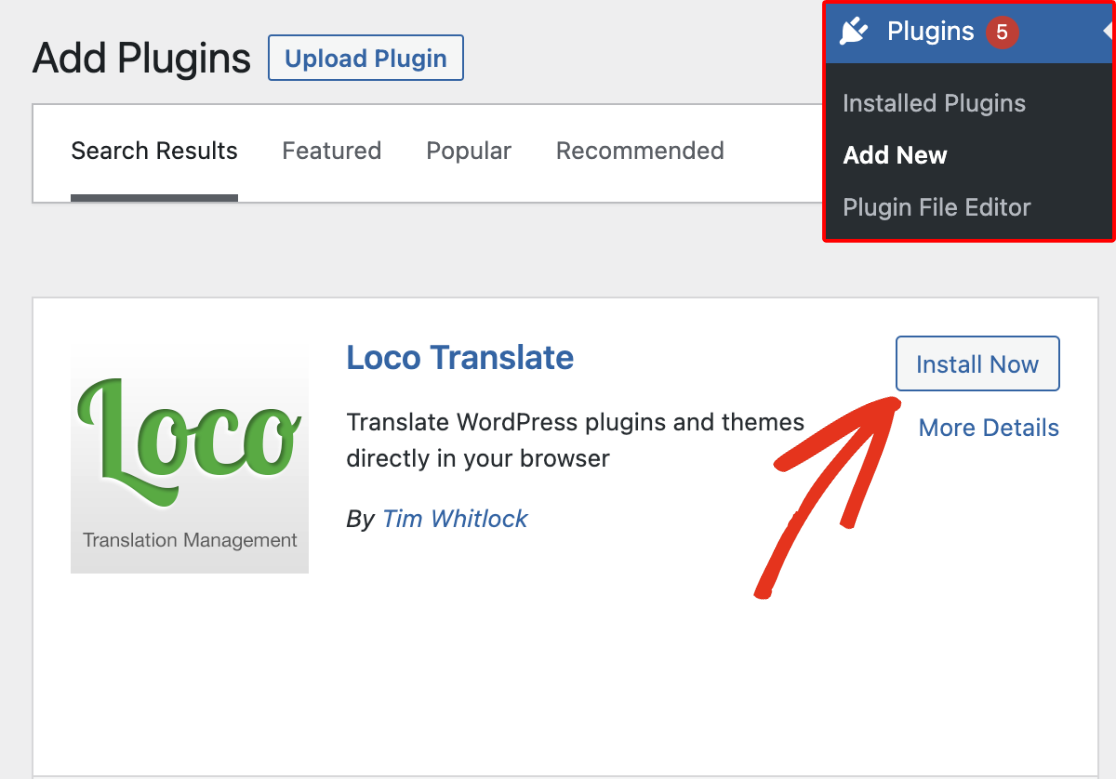
Note: For help installing plugins in WordPress, see WPBeginner’s guide to installing WordPress plugins.
After activating the plugin, go to Loco Translate » Plugins and select WP Mail SMTP from the available list. You can either look through the alphabetical list or use the search bar to filter out WP Mail SMTP.
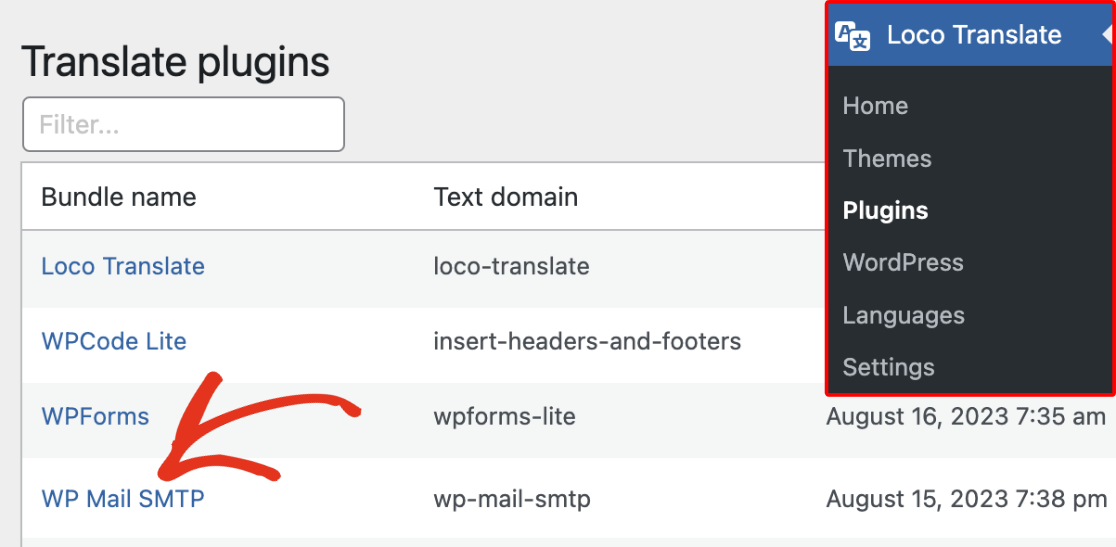
Adding a New Translation in Loco Translate
Next, you should be taken to the WP Mail SMTP translations page for Loco Translate. To build out a new translation, select New language.
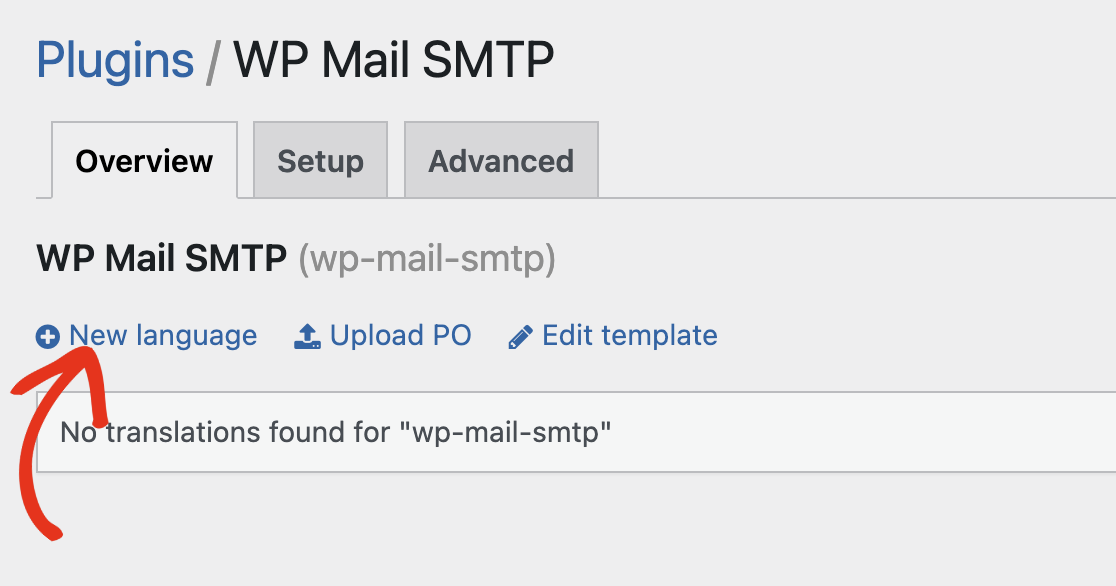
After that, choose the WordPress language option and select the language you’d like to translate the plugin to from the language dropdown.
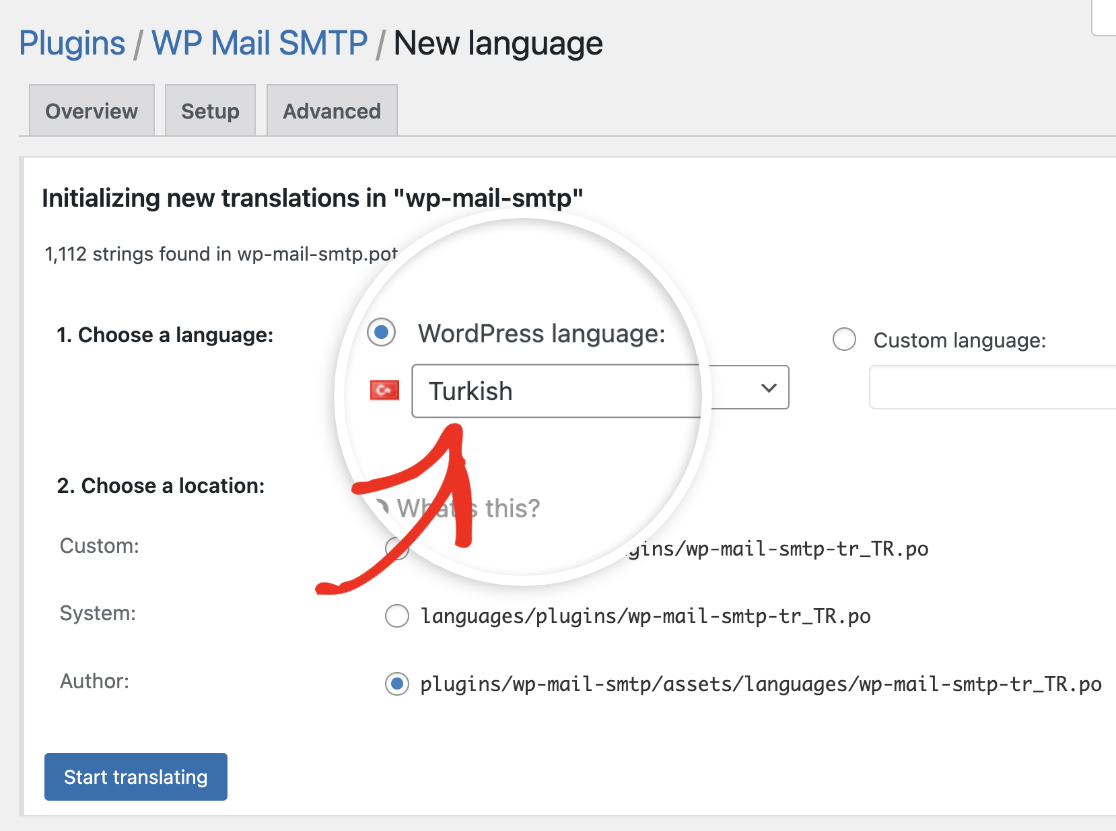
Note: If you choose the Custom language option, you won’t be able to switch your site to your target language once you’ve completed your translation. Loco Translate does not modify the WordPress language switcher in your site’s settings.
For more details, please see Loco Translate’s documentation on adding new languages and switching languages.
Next, you’ll need to choose where you want to save the translation file. Select the System location option. Choosing this option will protect your translations from being overwritten when WP Mail SMTP is updated.
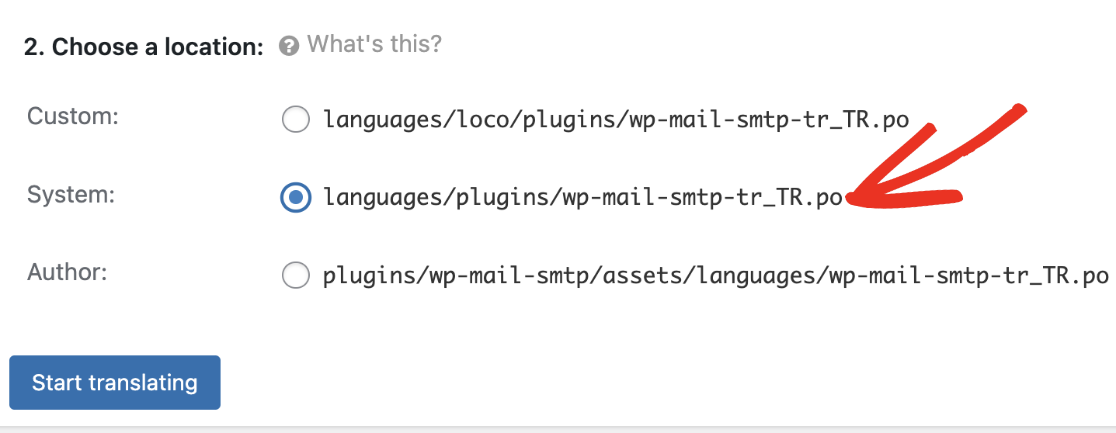
Note: To avoid losing your translations due to plugin updates, it’s important never to add files to the WP Mail SMTP plugins folder (shown in the Author option). Instead, add translation files to the WordPress languages folder so updates won’t alter those files.
After choosing your options, click the Start translating button to proceed.
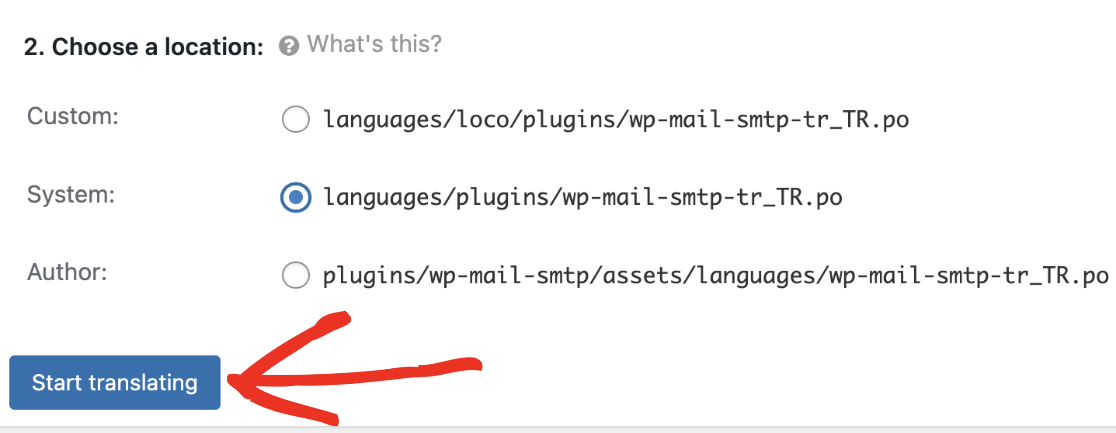
Translating WP Mail SMTP
On the next screen, you’ll see a list of all the text strings in WP Mail SMTP that are translation ready. Select a Source Text option from the list, then enter its translation in the space provided.
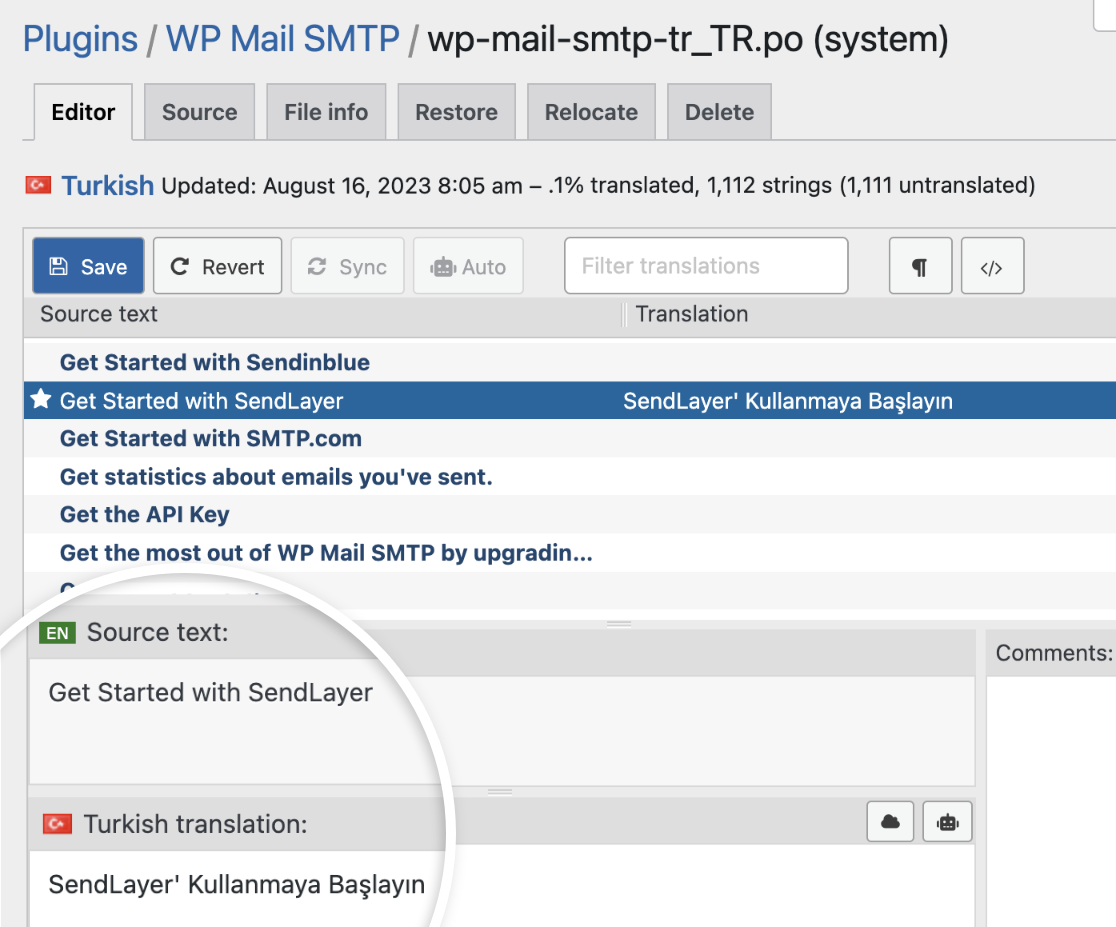
You’ll need to repeat this process for each string you want to translate. Once done, click Save to update your changes.
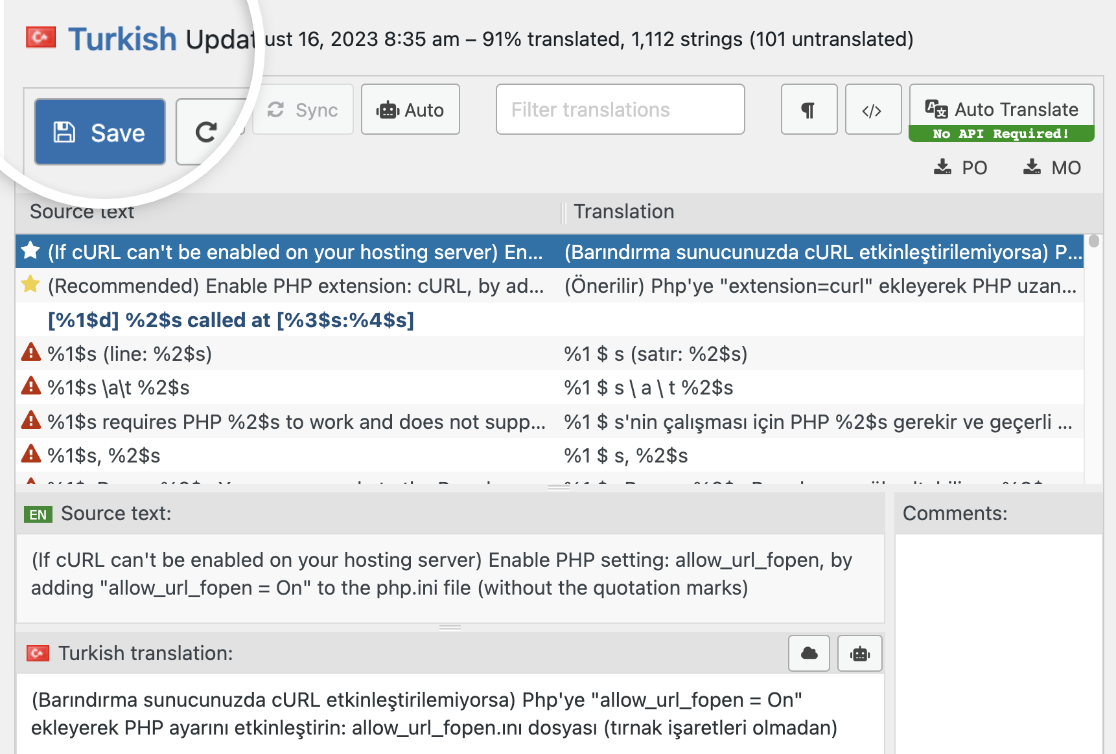
Switching Your Site’s Language
To see your Loco Translate translations in your WordPress admin area, you’ll need to set your site’s language to match the one you chose when adding a new language for WP Mail SMTP in Loco Translate.
For this, go to Settings » General and select the same Site Language you added in Loco Translate.
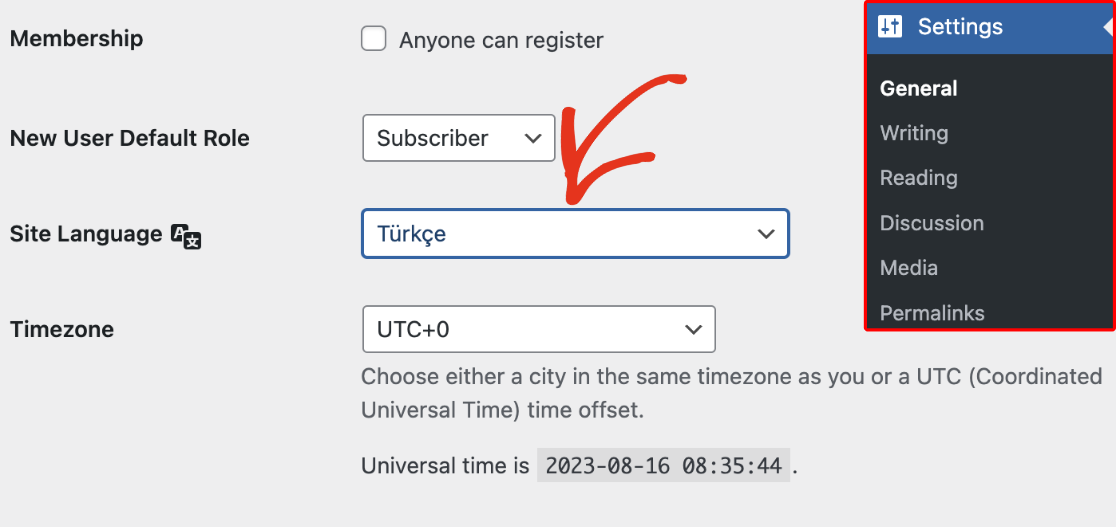
Note: Languages are labeled in English in Loco Translate. However, they are listed in their own language in your WordPress settings. So, if you selected French in Loco Translate, you’ll need to select Français as your Site Language. German would be Deutsch in your WordPress settings, Turkish corresponds with Türkçe, and so on.
WordPress will install the language pack for this translation when you save your changes. After that, you should see WP Mail SMTP translated into your selected language.

That’s it! Now you know how to translate the WP Mail SMTP plugin into a different language.
Next, would you like to conditionally send emails using different mailer connections on your site? Be sure to check our smart routing tutorial to learn how.
